If you’ve been a gun-owning prepper or survivalist for any amount of time, you’ve probably noticed a pattern. After every large-scale shooting where a politician opens his mouth and breathes the words “gun control”, whenever a large-scale firearms regulatory law goes into effect (remember the 1994 “Assault Weapons Ban”?), or whenever there is a general alarm that gets raised for a perceived condition, certain firearms and ammo calibers suddenly become unobtainable for a period of time.
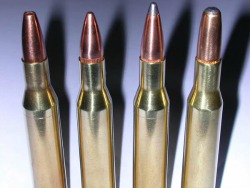
By Drew, a contributing author of SHTFBlog & Survival Cache
Most recently, after the tragedy at Newtown, I remember whole AR-15s, AR stripped lower receivers, AR magazines, .223/5.56mm, 9mm,7.62x39mm, and .22LR ammo just being ripped off the shelves at the gun shop I worked at. Glocks and 9mm ammo disappeared in a flash. Heck, .22 LR production STILL hasn’t recovered fully.
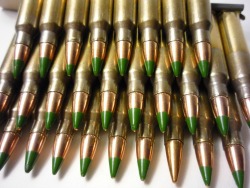
All the standard go-to guns and calibers that preppers gravitate towards – AR-15s, AK variants, SKS variants, Glocks and other semi-auto handguns, any .22 rifles and handguns, for example – are the first items to vanish once the balloon goes up. While I can’t say that I don’t take part in grabbing what I can when I see trouble on the horizon, I do also take notice that there are some calibers and some guns that always seem to be around, even during scares. That got me to thinking: are there caliber and firearm combinations that I should be looking into if I want to maintain a relatively uninterrupted supply chain during the alarmist times that are sure to come – especially if a certain someone gets elected this November?
Related: Should You Have Only One Caliber?
Let’s take a look at a few great calibers that always seem to stay on the shelves in extreme times (at least in my corner of the world), and are definitely worthy of a second glance, especially if your plans don’t require High Speed Low Drag ARs or AKs.
The Secret 6
1) .270 WINCHESTER: The .270 is an oldie but a goodie, having been introduced by Winchester in the early 1920′s as a pairing with their new Model 54 (one of my personal favorite rifles ever). The late, great gun writer Jack O’Connor quickly endorsed the caliber and the cartridge quickly found widespread favor with hunters who appreciated the round’s versatility: it shot hard enough to be effective on most of North America’s big game, yet the trajectory was so flat that varmint hunters embraced it for long-distance shooting as well. The cartridge shoots a .277” (6.8mm)130-grain bullet well over 3,000 feet per second (fps), and 150 grain bullets at almost 2,900 fps – and these figures can be improved upon with handloading. Speaking of handloading: bullets are available from 90 grain varmint weights, all the way to deep-penetrating 180-grain bullets. Factory loads on store shelves are almost always 130, 140, or 150 grains.
Also Read: Building The World’s Most Versatile Gun
The .270 Winchester still consistently places in the top ten most popular U.S. centerfire caliber lists – a nod to its effectiveness, even though it’s not the newest, hottest powder-burning hot rod caliber out there. The sheer popularity also guarantees that ammo companies will be producing this caliber in large quantities for years to come.
The .270 still comes as a standard caliber in a wild array of rifles (again, owing to its popularity). You like semi-autos? The Remington 4/74/740/742/7400 line of rifles or the Browning BAR are available in this caliber. Pump action? Sure! Take a gander at the Remington 6/76/760/7600 family. Lever guns? The Browning BLR is pretty sexy and good at what it does. Bolt guns? Pretty much every manufacturer out there makes one (usually many more than one) in their long action configuration. Added bonus: You can get 10-round extended magazines for the Remington 7400 family, making it a heavy-hitting, fast-firing semi-auto rifle that doesn’t set off “black rifle” alarms.
2) .17 HMR (Hornady Magnum Rimfire) & .17 Mach2 (MK2): The .17 caliber rimfires came out in the early 2000′s as speedier, flatter-shooting alternatives to the .22 WMR (Winchester Magnum Rimfire) and the ubiquitous .22 Long Rifle. The .17 cases are designed by necking down the parent .22 cases to accept flyweight .177” projectiles. The .17 HMR, based on the .22 Magnum, has been a modest success, while the .17 MK2 never really took off. However, ammo is on the shelves in the bigger box stores when the .22 shelves are barren and collecting dust.
Ballistically, these calibers out shoot their parent cases with ease, with far higher velocities and flat trajectories making them stellar small game (think smaller than coyotes) calibers out past 100 yards. The downside is the lightweight bullets don’t buck wind as well, and don’t retain energy very well. The little tiny jacketed .17 caliber bullets are more expensive to produce in their many forms (FMJ, Polymer Tip, JSP, and JHP bullets are available) so be ready for sticker shock if you’re used to buying .22 LR at $40/brick. But if it’s there and the .22 is not, The diminutive .17 rimfires suddenly look a lot better…
Related: Best Handgun Calibers For Survival
There are several rifles out there available if you look. Savage and Marlin seem to lead the pack with the .17 HMR, and Ruger made the 10/22 series guns in .17 MK2 if you poke around. There are also conversion kits available if you want to change out your big boy caliber AR upper and shoot .17 HMR or .17 MK2. The .17 rimfires are expensive plinkers, but devastatingly useful foraging and varmint eradication calibers.
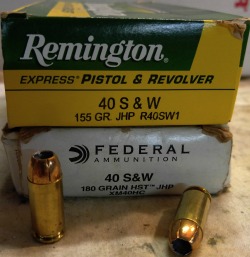
3) .40 S&W: This caliber is included here as more of a prediction based on current events. The .40 S&W is really a great handgun caliber, effectively bridging the gap between 9mm and .45 ACP. The handgun world is experiencing a paradigm shift these past couple years, with the FBI and many other police departments switching to 9mm – the 9 is a bit more controllable, and holds more ammo in the mags. With bullet and powder technology making advances quickly, the 9mm is having the playing ground leveled somewhat. (Nobody has seemed to mention that these advances might make the .40 S&W and .45ACP that much better, too…but I digress.) 9mm ammo is also less expensive, with military surplus or mass-produced military style ammo easy to find these days…though the 9mm military 124-grain FMJ ball round is notoriously ineffective.
The .40 is still a very viable caliber for anyone to consider, fitting between the 9mm and .45 ACP perfectly. Yes, the caliber is a high-pressure meanie, causing more muzzle blast and recoil, but guess what? It’s not that bad. There, I said it and I mean it. I carry a S&W M&P Compact in .40 S&W every day – and its recoil is easy to work with if you practice. Full-sized .40 guns are easily controlled. A .40′s standard load of 155-grain JHP at 1,200 FPS is pretty mean – especially when you consider that the “gold standard” 9mm load – the 124 grain Speer Gold Dot – is only 100 FPS faster.
Related: 2 Guns, 1 Caliber
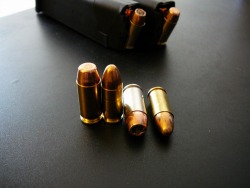
Fast forward to a politician-driven weapons ban or even a SHTF event – since everybody has switched to 9mm, that ammo screams off the shelves. The .45ACP fanboys follow suit. The .40 S&W, while still relatively popular now, is declining with people starting to swing to the 9mm or .45 ACP camps – so ammo will likely be available for long enough for you to go out and top off the reserves if you act fast enough.
Related: Top 5 Ammo Types for Your Survival Guns
There are literally hundreds of awesome .40 S&W pistol designs out there, especially in the police department trade-in market. You can get Glock 22, S&W M&P or Sig P226 PD trade in pistols for half the cost of a new 9mm variant. Tried to find a Glock 19 lately? Good luck with that! But Glock 23s – the exact same gun in .40 S&W – are usually in stock in most stores. It never hurts to have a gun with a caliber that begins with “4” in the SHTF arsenal.
4) .30-30 WINCHESTER: The timeless .30-30 Winchester was introduced a staggering 121 years ago for Winchester’s fresh-off-the-presses John Browning-designed 1894 Model levergun. It became a runaway success immediately, with its .30 caliber bullet motivated out the muzzle at the serious-for-the-time 2200 feet per second. It was used all over the globe and considered a great game-killer, even being used on game like brown bears and African species. Today, we would shudder at the thought of hunting leopard with a .30-30, but in the early 20th century, the little rifle’s fast-handling characteristics and zippy bullet meant it was THE caliber to have for hunting. (Remember, the ’30-06 wasn’t even introduced until 1906 – and it probably still took a while for it to get to the civilian market.)
For a modern SHTF planner, the same still holds true. The .30-30 is still a very effective caliber for protection and game-getting. To this day, handy, fast .30-30 rifles are coming off the production lines, and modern bullet and powder technology like Hornady’s LeveRevolution series have breathed new life into this ancient caliber. Winchester alone made over SEVEN MILLION ’94 Winchesters, and Marlin’s 336 is still running strong. If you handload and you own a bolt-action .30-30 like Remington’s tack-driving Model 788, you can push the .30-30 awfully close to .308 Winchester velocities. It’s a versatile caliber, with factory loads produced from 125 grain hollowpoints to 170 grains. Prepper tip: the .30-30 is ballistically VERY similar to the infamous 7.62x39mm that feeds millions of AK variants worldwide.
A good man with a ’94 Winchester or 336 Marlin can rip a magazine full of aimed rounds off a lot faster than you’d think – and aftermarket accessories are available to mount lights, scopes, and more to these often-overlooked designs. Due to the sheer number of .30-30 rifles in the world still on active duty, ammo will always be made and should be available when that 7.62×39 for your SKS isn’t.
5) BELTED MAGNUMS: Ahh, the magnums. All testosterone and horsepower. And recoil. And noise. And it’s on the shelves in the common calibers. When the post-Newtown scare had every gun guy buying up .308, 5.56mm, and 7.62×39 the second they saw it, the 7mm Remington Mag, .300 Winchester Mag, and .338 Winchester Mag were still hanging out like the smelly kid at a school dance. Why? Well, they are fairly specialized calibers. They are excellent at what they do – shooting long, long, loooong distances, hitting with lots of authority, and grouping accurately. However, the calibers produce lots of recoil. All that powder in those huge, fat cases means a brutal muzzle blast and stout recoil. The long cartridges require magnum-length rifle actions, which means the rifles are heavier and overbuilt. Handloaders shy away from them due to the huge amounts of gunpowder that the cases swallow up. And those finger-sized brass cases and large amounts of powder means that any factory ammunition you grab up will be quite expensive.
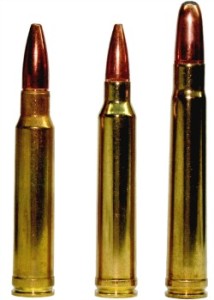
But all that being said, these calibers have a definite place in the SHTF arsenal. For the purposes of this article, we have to point out that this ammo is usually on the shelf. Also, like all the calibers on this list,they aren’t military calibers per se – these are 99.9% used for hunting big game – so ammunition bans aren’t likely to target these calibers. But the real shiny reason to have one of these in the rack is that they are capable of hitting targets hundreds of yards away. (I personally shot a West Virginia whitetail buck at over 600 yards with a .300 magnum – and I have a witness! ) Now, that doesn’t mean that owning one suddenly makes you Chris Kyle – it takes lots of practice rounds downrange to be able to put a bullet that’s less than a third of an inch across into a four-inch bullseye at 500 yards. But you have the capability at your disposal, and many can see the use of a long-range, accurate, hard-hitting game rifle once the chips are down.
Stick with the 7mm Remington Magnum, .300 Winchester Magnum, and .338 Winchester Magnum. The new “super Mags” from many makers, the Weatherby calibers, as well as the .300 and .375 Holland & Holland cartridges are too few and far between, and will be hugely expensive to procure, even in quantity. Rifles for all these calibers can be sourced from pretty much all the major manufacturers – mostly bolt guns, but there are semi-autos and lever actions out there too. Check out the Nemo Arms Omen series if you want to do some SERIOUS drooling.
6) .30-06 SPRINGFIELD: I’m saving the best for last. My grandfather always told me, “if you can’t kill it with an ought-six, you shouldn’t be shooting at it in the first place.” That phrase always rang in my head and made me smile, and it’s probably the major reason why it’s my favorite caliber of all time. But it holds true – the .30-06 has probably killed every species of game on this planet (whether or not it was a smart idea to be shooting at Cape Buffalo with an ’06 is debatable). The 110-year old .30-06 design may very well be the most versatile caliber on the planet.
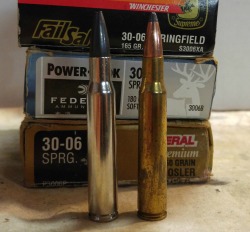
The Old ’06 is just one of those calibers that turned out “right”. An evolution of the .30-03 case with a shorter neck, the .30-06 was brought about as a military caliber, and it quickly turned into the sportsman’s sweetheart – and it never went away. Today, the .30-06 is running as strong as ever, even in the face of new designer calibers – many of which are based off the ’06 as a parent case. Excellent rifles are being turned out in droves with the ’06 as the bread-and-butter caliber. It is a dependable caliber that will kill anything on the North American continent with authority (even the big coastal brown bears if you’re good about bullet placement).
Factory loads used to start at 55 grains with the old saboted Remington “Accelerator” loads (I’m not sure if these are still produced), but now they start off with Hornady’s 125-grain SST rounds and go up through the heavily-jacketed 220-grain round nose loads, with most fodder you run into being 150, 165, or 180 grains. The ’06 is a handloader’s dream, being forgiving to load for, with excellent accuracy usually resulting. If I could only have one rifle caliber in this world, it’d be the .30-06. Luckily, ammunition is plentiful and pretty inexpensive – as are rifles in any configuration you could really ever dream of. You don’t have one? Why not?
CONCLUSIONS
This article is relatively subjective, based on what I’ve seen with my own two eyes as people react to situations out of our control. If you don’t want to be a slave to scraping the bottom of the barrel and price gougers, one of the above calibers in a high-quality firearm is a safe bet. It may not be the sexy AR-15 with a high-capacity drum and lasers and 20 power scopes and lights you dream of. But a firearm is only useful when it has ammunition – and what you have when the ball drops is what you have.
Related: Military Surplus Guns For SHTF
If what you want is that chicks-dig-it AR or AK, get it now. Get ammo and mags now. As of today (3/10/2016), ammo is plentiful and gun shop racks are bursting with magazines and accessories. We never know when there will be another Newtown or politician-driven “Assault Weapons Ban” – one could happen today. If you don’t want to make do with what others won’t, act now while you can. It’s a smart course of action for your SHTF plans. If you react when the masses do, you won’t get what you need, and you’ll pay too much for what you end up with – and nobody wants “this will have to do” in a SHTF situation.
Anybody else out there have other calibers to add to this list? My list is based on observations in the New England area – what have you seen in your locale? Sound off in the comments section!
by Drew







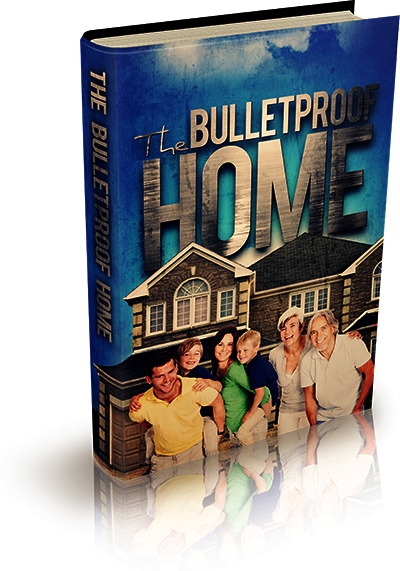
Your article is spot on Drew. One’s region of the country may have different preferences when it comes to selecting firearms and ammunition. I too would rather have the .40 S&W rather than the 9mm in my experience the .40 has much more stopping power than the 9. But then I used a .45 ACP when I was in the Navy as well as the M-14 rifle in 7.62 mm and the 12 gauge shotgun. I still use the .45 ACP and 12 gauge, but my rifles choices are different than what I had in the Navy. I’ve moved more toward the bolt action rifles for improved accuracy and range. But I would like to own a DS Arms SA58 or M1-A rifle for CQB situations. Military surplus rifles are very common as is the ammunition that is being manufactured for them. And in most cases the prices are going to fit virtually every budget. Even well known companies like Hornady have taken notice of the popularity of the “milsurp market” and are producing ammunition in 8mm Mauser and .303 British in addition to other calibers. There are plenty of WWII rifles out there that are in very good to excellent condition, I know because I own some of them. Some are rather expensive but some remain affordable as long as the demand does not outweigh supply this should remain the case for some time. With the numerous ammunition manufacturers spurring on new interest in shooting milsurp rifles, several rifle manufacturers are now bringing out rifles in what used to be considered obsolete calibers. These would include 8mm Mauser, .303 Enfield, 6.5 Creedmoor, and the 7.5X55 Swiss in addition to others. I would also ensure that I have a rifle in .338 Lapua Magnum for those times when a shot or two needs to be fired at an extensively long distance. Whatever caliber is selected one should ensure that the factory ammunition or reloading components are available, or in vast amounts. If one should visit the local stores in the Great Plains states you may be surprised how much of the military surplus ammunition is still on the shelf while all of the more popular calibers are more popular than one imagined. I would also check the internet and order my ammunition from companies that specialize in selling shooting and hunting supplies, chances are your local retailer will purchase his or her ammunition from the same suppliers your choosing.